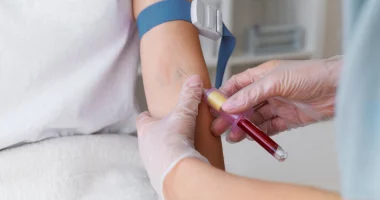Bat ear, commonly referred to as protruding ear, is a condition where the outer ear sticks out more than normal from the head. This can be due to different factors like abnormal cartilage development or a lack of folds that normally help shape the ear. Protruding ears can sometimes affect self-esteem, particularly in children, but they do not typically affect hearing ability. Surgical correction, known as otoplasty, is often considered for cosmetic reasons, especially if the condition causes psychological distress or social discomfort.
Symptoms
Bat ears, or protruding ears, are characterized by several noticeable features. The most prominent symptom is the external ear that sticks out prominently from the head. This can be due to the absence or underdevelopment of the normal folds and contours that help shape the ear closer to the head. As a result, the ears may appear more prominent and can sometimes resemble the shape of a bat’s ears, hence the colloquial term.
In addition to the physical appearance, individuals with protruding ears may experience psychological symptoms. Children, in particular, may face bullying or teasing from peers, which causes issues with confidence and self-esteem. Individuals with protruding ears may also feel self-conscious about their appearance, affecting their social interactions and overall well-being. These signs are crucial in considering treatment options like otoplasty, which can help address both the emotional and physical aspects of protruding ears.
Causes
Bat ears, or protruding ears, can result from different factors related to the development of the outer ear structure:
- Genetics: One of the important causes is genetics. The position and shape of the ears are influenced by inherited traits. If both parents have protruding ears, there is a higher possibility that their children can also have similar ear structures.
- Abnormal Cartilage Development: During fetal development, the cartilage that forms the outer ear may not fold properly or may fail to develop the normal contours that help the ear lie flat against the head. This can cause a more prominent appearance of the ears.
- Environmental Factors: In some cases, external factors during pregnancy or early childhood may affect ear development. These factors can include prenatal influences or trauma to the ears during infancy, although genetic predisposition tends to be the primary factor.
These causes can help individuals and healthcare providers identify why bat ears happen and discuss appropriate treatment options, such as otoplasty, if desired for psychological reasons.
Treatment
Treatment for bat ears, or protruding ears, often involves surgical correction known as otoplasty. This procedure aims to reshape the ears to a more natural position closer to the head. During otoplasty, the healthcare provider usually makes small cuts behind the ear to enter the cartilage. They may then reshape the cartilage and use sutures to create or enhance the natural folds that help position the ear closer to the head. This surgical intervention can effectively reduce the prominence of the ears and improve overall facial symmetry.
Post-surgery, patients may experience mild discomfort and swelling, which usually subsides within a few weeks. It’s important to follow post-operative care instructions provided by the surgeon to ensure proper healing. Otoplasty is generally considered safe and effective, offering long-lasting results that can significantly boost self-confidence and reduce any psychological distress associated with protruding ears. Consulting with a qualified plastic surgeon is crucial to discuss individual goals, expectations, and any potential risks associated with the procedure.
Post-surgery care
Post-surgery care following otoplasty, which is the surgical correction for bat ears or protruding ears, typically includes several important steps to ensure proper healing and optimal results:
- Dressing and Bandages: Your surgeon will likely apply a bandage or dressing around your head immediately after surgery to protect the ears and provide support. This dressing should be kept clean and dry as instructed by your surgeon.
- Medication: You may be prescribed pain medications to manage any discomfort during the initial recovery period. Follow your surgeon’s instructions regarding the dosage and frequency of these medications.
- Activity Restrictions: Avoid strenuous activities and heavy lifting for several weeks following surgery to prevent strain on the ears. Your surgeon will provide specific guidelines on when you can gradually resume normal activities.
- Ear Care: Keep the surgical site clean and dry. Your surgeon may provide instructions on how to gently clean around the ears and rule out any crusting or discharge that may occur.
- Follow-up Appointments: Attend all scheduled follow-up appointments with your surgeon to observe your healing progress. These appointments are crucial for assessing the surgical results and addressing any concerns or questions you may have.
- Wearing Headbands: In some cases, your surgeon may suggest putting on a headband or bandage over the ears at night to help maintain the new ear position during the initial healing phase. Follow their instructions regarding the duration and frequency of wearing such garments.
By adhering to these post-surgery care instructions and maintaining open communication with your surgeon, you can help ensure a smooth recovery and achieve the desired aesthetic outcomes from otoplasty.
Prevention
Preventing bat ears primarily involves genetic factors that are not easily preventable. However, ensuring a healthy pregnancy with regular prenatal care may help decrease the chance of certain developmental abnormalities. Avoiding trauma to the ears during babyhood and childhood can also be beneficial. While it’s not always possible to prevent protruding ears because of genetic predisposition, early intervention with otoplasty can effectively correct the condition and minimize any potential psychological impact later in life.
Summary
Protruding ears, often referred to as bat ears, result from genetic factors or abnormal cartilage development during fetal growth. They are characterized by ears that stick out prominently from the head due to a lack of natural folds. Surgical correction, known as otoplasty, reshapes the ear cartilage to a more natural position closer to the head. Post-surgery care involves keeping the ears clean and dry, using medications as prescribed for pain management, and attending follow-up appointments to monitor healing.
While prevention is challenging due to genetic influence, maintaining a healthy pregnancy and avoiding ear trauma can potentially reduce the risk. Otoplasty offers effective treatment, enhancing both appearance and self-esteem for individuals affected by protruding ears.









